The Curious Tale of Austin Sheldon
The Hermit of Lehman Township, Pike County Pennsylvania, and his alleged treasure.
Guest Blog Post by George SHELDON
Copyright ©2021 George Sheldon – All Rights Reserved
If truth really is stranger than fiction, this saga about a mysterious and strange man will make you wonder if this is myth or fact, or perhaps, somewhere in between the two. It has twists, turns, and curves. It’s peppered with contradictions, some questionable facts, and sloppy journalism stuffed full of embellishments. It’s the kind of yarn that should be told around a roaring, bone-warming campfire during a chilly autumn evening.
BACKGROUND
Some of the facts of this story are indisputable. There really was a man named Austin SHELDON. He was born June 26, 1806, into a large Connecticut family consisting of multiple SHELDON children. Several accounts describe his family as well-to-do and made their living as successful farmers. His father was Jeremiah and his mother was Cate (sometimes Kate or Catherine) LANPHERE, who were married June 29, 1801. His mother died on February 29, 1864. The exact location of the Sheldon farm was somewhere in New Haven County, and most likely in or near the town of Branford. Austin was apparently born in Stony Creek, which today is a shorefront neighborhood in the southeastern section of Branford. It’s a most picturesque place. It has two harbors. The town has a beach. There is a mountainous rock ridgeline that stretches from Long Island Sound to not far from the Vermont border. There are plenty of quaint New England-style houses, churches, and assorted other buildings. Practical and sturdy, and still well-preserved, many are located in the town’s historical district. It could easily be featured on a postcard sold to awe-struck tourists. It is quintessential New England.
Several decades after Austin was born, the railroad stretched its tracks to the town, which prospered even more. It became known as a resort area. There would eventually be 20 hotels built here in the area where Austin was born and raised. One of those resort hotels was the SHELDON House in Pine Orchard, It was run by three generations of a SHELDON family. It eventually closed in the late 1900s. There are still SHELDON’s living in Branford today.
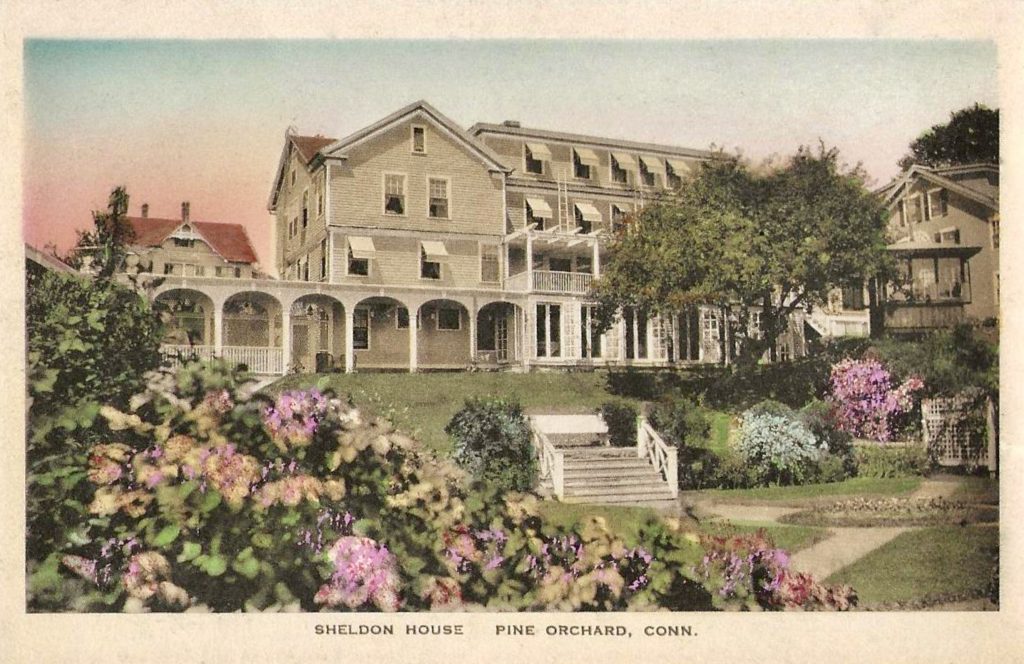
Clearly, it is the kind of place where people want to live. It has a small-town quality of American life completed with recreation and an economy that thrives. Plenty of opportunities, now and in the day when Austin was a teenage boy. Austin SHELDON was not an uneducated farm boy. He received a good common school education, and by age 15, he commenced an apprenticeship as a blacksmith. Teenage boys would serve as an apprentice to a local blacksmith, and sometimes, would even sleep in the shops. Part of the apprenticeship included room and board. The young apprentice would start their day early, getting the fire ready for a day of metalworking. Blacksmith apprentices would toil in the shop for several years, and they would work toward building their own set of tools they would use in their own shop when the apprenticeship was over. Blacksmiths were an essential part of a community, and made all kinds of things, from door hinges to nails. The hand-crafted tools used on the farm to work in gardens and fields. They made kitchen tools. Most likely, by the time he was 19 or 20, he had the tools he needed to become a working blacksmith. With certain determination, a strong back, and a sweaty brow, Austin worked at his furnace, hammering hot, molten metal into a useful shape and purpose. He likely made horseshoes of various sizes. In his time, there was always another project or order.
He must have learned his trade well because, by the age of 25 or so, he had accumulated several thousand dollars. As a blacksmith, this educated and enterprising young man was, by all accounts, quite successful and prosperous.
AUSTIN SHELDON FINDS A BRIDE
Austin’s evidently enthralled life was about to take a strange turn. A woman he cherished was sent away to a boarding school. Her parents did not favor Austin or their union. Austin was not able to discover her whereabouts. Heartbroken, Austin eventually searched for a new love. When he found her, the pair anticipated a long, happy life together. The bride was the daughter of a well-to-do farmer. Julia Ann TUTTLE (or TUTHILL ) of Plymouth. After their brief courtship, they wed October 10, 1832. Reverend Henry Stanwood of Bristol officiated. They lived happily together, but after a few weeks, she became unexpectedly ill. She was bedridden until her death.
Or maybe not. There is another version of this story and what happened to Mrs. Austin Sheldon. In the second version, after they wed, a violent Nor’easter struck their home during the night while Austin was away on business. Fearing for her life, Julia sought refuge in their dark cellar. The storm raged and battered the door windows. Julia never quite recovered. She had to be committed to a mental institution, where she died not long afterward. And then there is The New York Times version, that published a letter that said she died 10 years after they married.
One version of a legend says he just disappeared later on the day after he attended Julia’s funeral and burial. But that seems unlikely to be true. When the story of Austin SHELDON was posted earlier this year in the Sheldon Genealogy Facebook Group, Member Dr. Roy Sheldon wrote, “From my research on Ancestry, it appears that she actually died not shortly after their 1832 marriage, but actually in 1872, 40 years after their marriage!” Trying to determine what happened to Julia is not easy. There are several written, conflicting accounts that exist.
Dr. Sheldon continued in his Facebook post, “ The 1860 census shows 51-year-old Julia Tuttle Sheldon living with her elderly parents in Plymouth, CT. After her parents died about two months apart in 1869, she appears in the 1870 census to be a resident of the Hartford Retreat for the Insane.” “After her death in 1872,” Dr. Sheldon wrote, “She was buried in her hometown of Plymouth, Connecticut. While the exact details of what actually happened to Julia may be lost to history, one thing is certain. Without telling anyone, Austin SHELDON simply vanished. He inexplicably disappeared from his quaint hometown on foot.
AUSTIN SHELDON ARRIVES in PENNSYLVANIA
As Austin began to wander through the mountains of Connecticut, New York, and eventually into northeastern Pennsylvania, Austin, who was also known as “Old Pluto,” continued his search for a happier life. His friends and family in Connecticut continued to wonder for many long years what had become of him. They thought he may have been lost at sea, as he often talked about sailing to distant lands. After some time, they had given up hope of seeing him again. Exactly when and where he arrived in Pennsylvania is not certain, but he did end up in southern Pike County, in an area known then as Dingman’s (today it is Dingmans Ferry). It is along the Delaware River, which separates Pennsylvania and New Jersey.
Austin purchased a tract of mountainous land. Located off Brisco Mountain Road in Lehman Township, where he took up residence. First, he lived in a hut created from tree bark, wood, and brush. He later moved into a small cave on his property. Described as no more than an area about 8’x8’ in one newspaper, it was here that Austin would live for years as a reclusive hermit. He had built a roof entrance of flagstones. There were poles at the entrance, and they were covered with vegetation. Wherever the cave was located, the 1880 Census taker found Austin and included him in the Lehman Township district.
His cave had scant furnishings. Blocks of wood were used as chairs. He fashioned a fireplace out of stone to cook when he had food to eat. He had one ratchety rocking chair, which is where he slept. That chair was held together by rope. He had no bed and no comforts of a regular dwelling. Austin, who was not much taller than 5’ and weighed about 100 pounds, did not shave, and his white ungroomed beard flowed to his chest. His hair was disheveled. It is said he did not bathe and lived in his clothing for over 20 years. Twine held together what most would have called dirty rags.
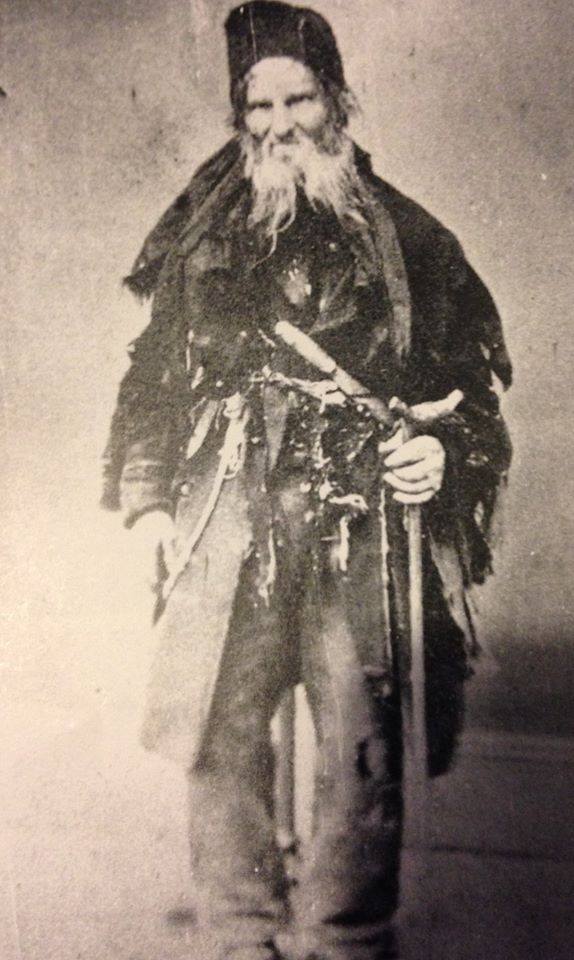
Austin survived by growing some potatoes and other vegetables in a small patch of land he cleared, eating wild berries, and snaring some rabbits or birds. Sometimes, he was able to catch a fish from a local waterway. He was known to walk to neighbors, where he would sell or barter his handmade knives for food. He was able to create knives with the fire in the cave and melted metal. Austin was always a religious man and carried a Bible with him wherever he walked. In his later years, he would boast that he had read the Good Book at least 100 times from cover to cover. He could recite the book of Proverbs word for word with 100% accuracy. That was before his eyesight began to fail. He also was losing his hearing as he aged.
Living alone deep in a remote Pennsylvania mountain had its challenges, and several times, Austin cheated death. According to an article in the Batavia NY Daily News in 1879, in the winter of 1867, Austin became stuck in deep snow and was rescued by a farmer who heard his cries for help. In 1876, a fierce forest fire nearly roasted him alive while he huddled in his cave. Another time, as he was ready to sit in his rocking chair, he saw something. He had a closer look and realized it was a five-foot-long rattlesnake. And his cave was invaded by a wildcat when he was roaming about his land. When he returned, Austin found himself in fierce combat with the predator. The wildcat sprung on him, wounding his shoulder. Austin was able to draw a knife and fought the animal for nearly half an hour.
Some of the observations of Austin SHELDON’s lonely and sad life in his cave were made by a reporter from The Evening Gazette, of Port Jervis, NY. Having worked his way through the Lehman Township thick-wooded mountain, the reporter “extended him a hand, he grasped it tremblingly, while a faint smile lit up his wrinkled and care-worn countenance.” The reporter said he was “as deaf as an adder, has been so for years.” “Persons conversing with him do so by writing upon a slate. All questions asked (of) him are answered in a manner plainly denoting thus his education was not neglected in his boyhood.” “Do you always expect to make this cave your abiding place?: the reporter asked. “Yes, such is my wish, until I die,” Austin replied.
AUSTIN SHELDON’S FAMILY FINDS HIM
Sometime in 1873, Austin became a bit of a curiosity and obtained near-celebrity status. Dubbed the Hermit of Lehman Township, a local paper wrote an article about the strange lifestyle of the case dweller living in Pike County, As was the custom then, newspapers would reprint or copy stories from one paper to another. One of the newspapers that reprinted his story was in Connecticut. Austin’s sister immediately realized where her brother was living in a dismal cave. Along with her husband, she traveled by train to Milford, Pennsylvania. They were able to get a guide to take them to Austin’s remote cave.
An article published in the Delaware Gazette and State Journal on January 28, 1886, states that Austin rejected their repeated appeals to return with them to Connecticut. According to this article, it was his sister that provided much of the back story of Austin’s earlier years and life in Connecticut. The article also states that “Three years ago, Austin Sheldon created a sensation by visiting several widows and young women in the settlement and proposing marriage to them. Being unsuccessful in obtaining a wife he returned to his hut.”
Perhaps it was his unkempt appearance, the tattered clothing, or the prospect of living in a remote, mountainous cave that did not appeal to those women he proposed to be his wife. Maybe months and years of solitude and loneliness were having an effect on Austin, now in his later years. The Evening Gazette, Port Jervis, NY, on January 28, 1884 published a front-page article that Austin SHELDON’s sister “after years of coaxing and pleading, had at last induced the old man to a visit to her and spend the balance of his life with her.”According to the paper, Austin was emotional leaving Pennsylvania that day, his eyes full of tears, as he awaited the train to take him back to Connecticut.
A few months later, Austin said he could not possibly live in civilization, and returned to his mountain and his dank, dark cave. The only light in his home during night’s darkness was from the fireplace. The New England Yankee preferred the solitude and sanctuary of his meager cave to communicate with God, read his Bible, and appreciate nature.
In 1877, the newspaper ran a story that Austin had died. His body was found in a 6-foot snow bank. A later edition retracted the report of Austin’s demise. When he was nearly 80, he fell out of a chestnut tree, breaking several ribs. He said then that when he recovered, he would return to Connecticut to spend his remaining days with his family. He was deteriorating, and his condition was worsening. He was taken in by Ira HEATER, a farmer and former member of the Army in the US Civil War. On January 18, 1886, Austin passed away. He was buried in the Delaware Cemetery. He died a widower with no children. His sister Phoebe erected a grave stone monument in memory of her brother, Old Pluto.
The newspapers just loved the story of Austin SHELDON. They continued to tell the story of a hermit that lived in a cave for forty years, nearly 10 years after Austin’s death. His story was published in large and small papers throughout the US. It often seems they played with the facts, and certainly painted a word picture of a strange man. They even repeated the tale of Austin lived alone in his cave, but did have a pet rat. It’s the kind of gossip and story-telling that neighbors spread about the mysterious Austin. Some papers suggest he lived in the cave for 40-plus years. The exact length of time he lived in his mountain refuge is really uncertain.
And even today, the rumors of the Hermit of Lehman Township persist. Internet users report their searches to locate Austin’s cave. He was rumored to have buried a considerable sum of money given to him by his sister. One says there is a gold watch there, too. It could be true, just as true as the legendary hermit of Pike County, Austin Sheldon, having lived with a pet rat.
Additional Notes:
Dr. Roy SHELDON (mentioned in this piece) researched the Sheldon lineage of Austin Sheldon. Dr. SHELDON traced Austin to the Isaac (1630-1708) line. The line is: Isaac1, Josiah2, Thomas3, Asher Sr.4, Asher Jr.5, Jeremiah 6, Austin7. Dr. Sheldon has built a public family tree on Ancestry.com. It is called “Austin Sheldon Family.” Austin SHELDON’s last name was also spelled SHELDEN. In fact, his name is spelled SHELDEN on his tombstone in the Delaware Cemetery. Austin Sheldon is buried in plot number 450 in the Old Section of the cemetery.
There are errors online reporting Austin Sheldon is buried in Philadelphia. If there is an Austin Sheldon buried there, it is not the Austin of this story. Here are links to Austin’s parent’s gravesites:

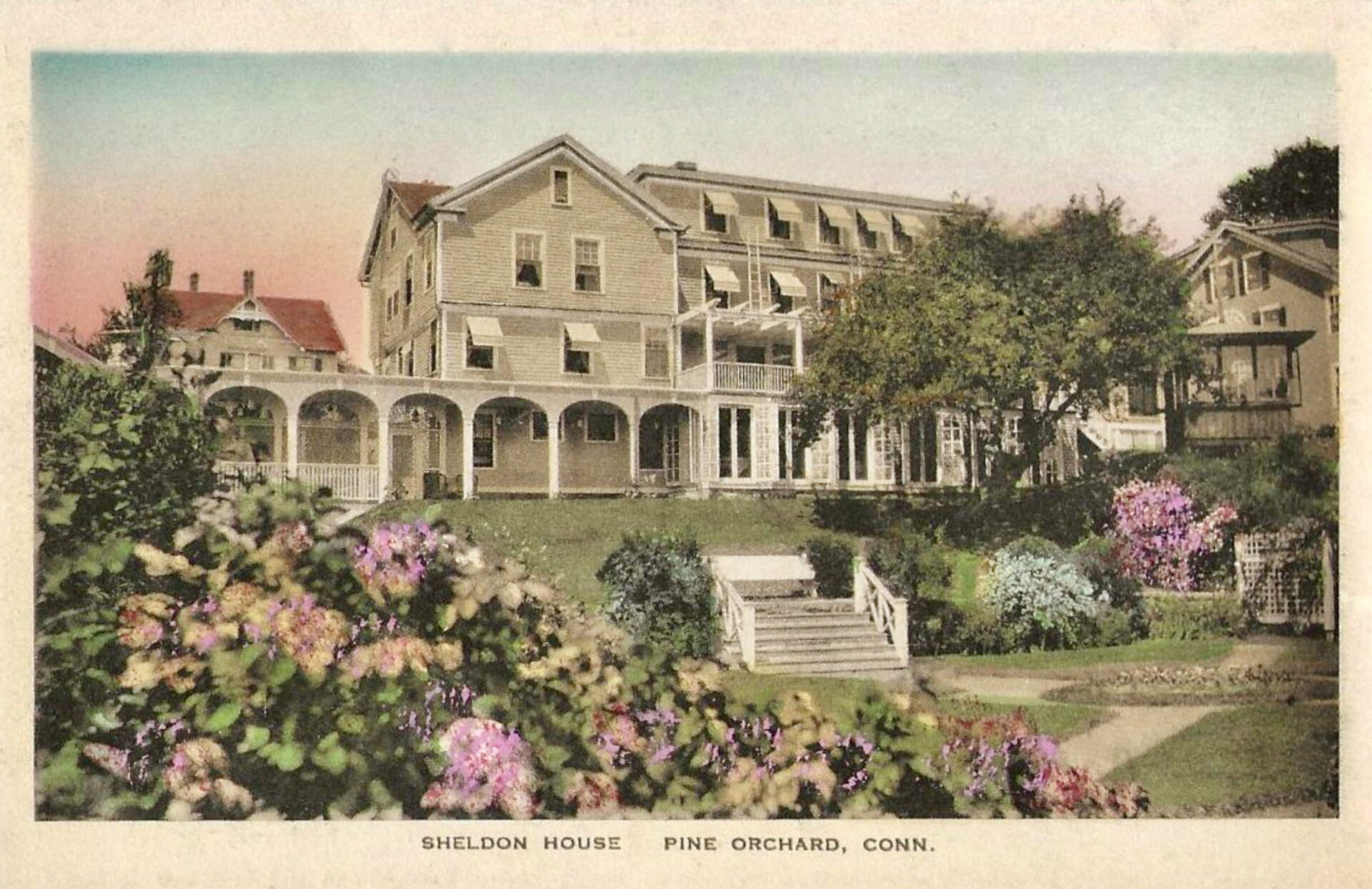
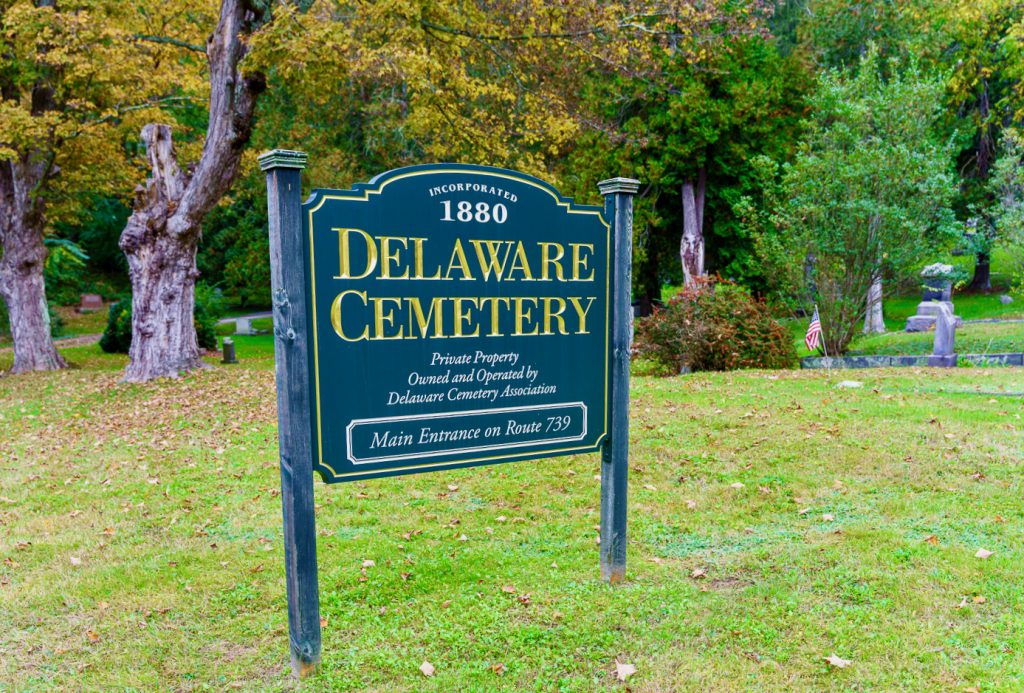
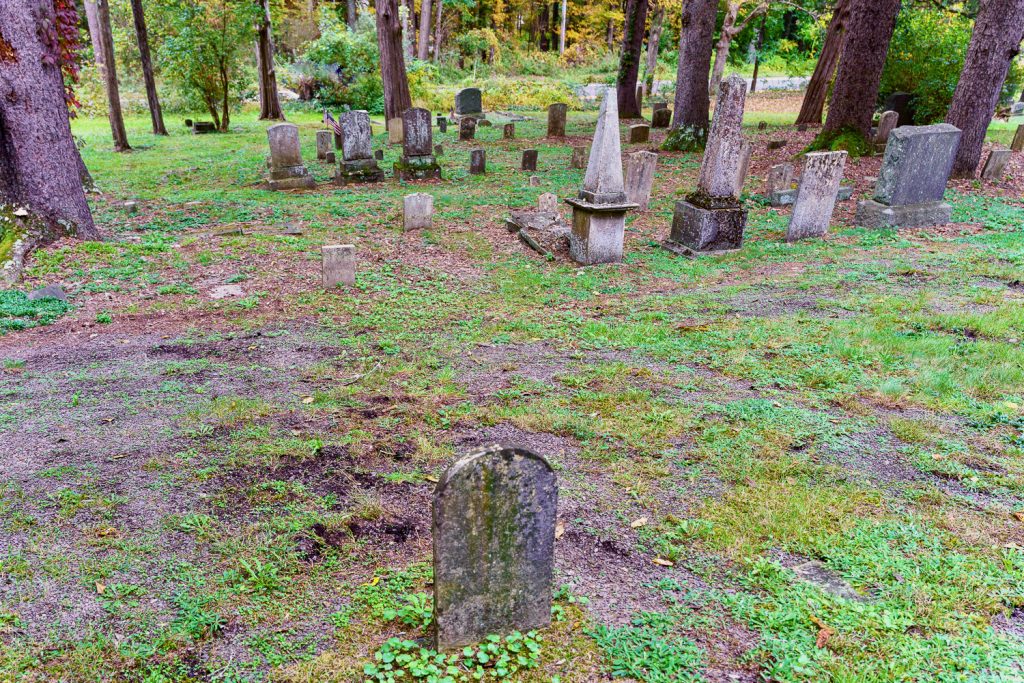

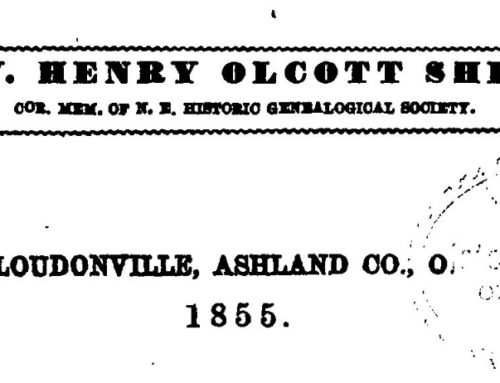


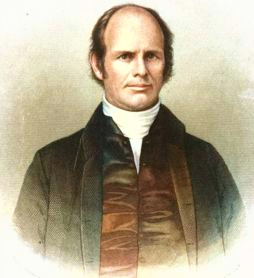

Probably just as well there were no descendants of Austin with the record of insanity on both sides of the family the loss of some genes can be an advantage in the future.
Thanks for more information on the post from earlier in the year, very interesting, loved reading the story. Also it gives me a tip to help find my family nameTuttle, I am wondering in the begging you say Plymouth, was that MA or CT as I see later on it is CT. Thanks
Not sure Patricia—we should ask George next week.